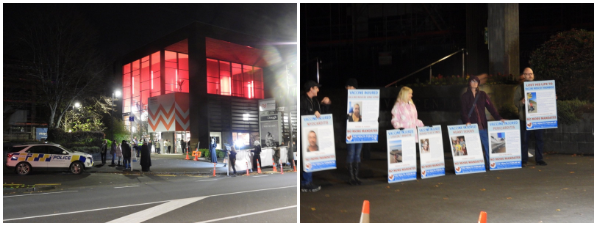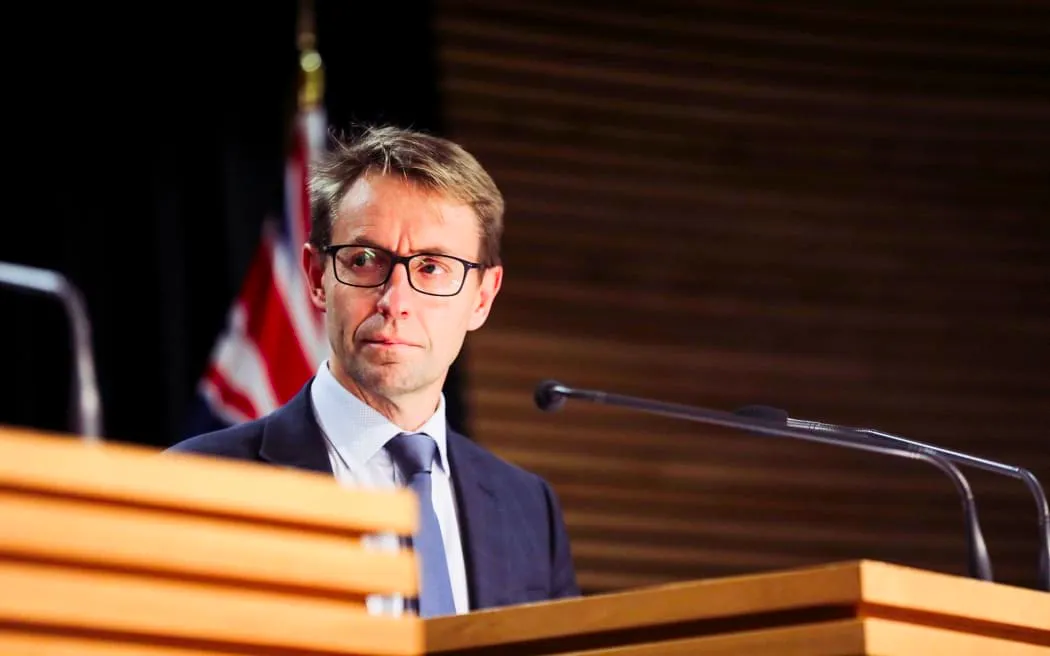Mishaela Daken
On Friday 9 June, Whirinaki Whare Taonga, previously known as The Exhibitions Art Gallery in Upper Hutt, Wellington, hosted a ticketed event called “An Evening With Sir Ashley Bloomfield.”
The presentation, which ran from 7 pm to 9 pm was part of a COVID-19 exhibition called “Inside The Curve”, which claims to tell the story of a global crisis through the lens of journalists and National Geographic storytellers. Having begun June the 3rd, the event will be continuing over four months until its end date in early September. Bloomfield’s evening appearance at the exhibition was advertised as providing insights into New Zealand’s journey through the pandemic.
The exhibition has been made available through a new fund set up by the National Geographic Society called the COVID-19 Emergency Fund for Journalists, with the intention of having a global reach and “provide support for storytellers covering the effects of Covid-19 in their own communities.”
In an article in The Dominion Post, the gallery Director Leanne Wickham? was quoted as saying: “As time has gone by and life moved forwards, there has not been a call to look back on and process the collective experience. My hope is that Inside the Curve will provide this opportunity and help us to find flickers of hope amid our sorrow, providing a place to come together in solidarity and in healing.”
Sir Ashleigh Bloomfield acted as the Director-General of Health during this time. He became the known face of the COVID-19 response and has since been knighted for the work he did in this role. Around 200 people attended his speaking event at the art exhibition on Friday evening. Amongst the attendees were around 25 members of the community protesting, who greeted Ashleigh at the event with banners which read “Welcome, Sir Dr. Death” and “Safe and effective. Yeah, right!” while signs showed photos and testimonies of vaccine-injured people.

Protesters holding photos of those injured by covid vaccine
Police were called to the scene to remove protesters, but due to protesting being a legal right in New Zealand, and the protestors being peaceful, the police instead passed on a trespass notice from the council requiring protesters to move further away from the building.
Bloomfield’s talk was followed by a short time for questions where one attendee, John, said he was “attempting to ask a question on behalf of the unvaccinated” (see the video here which has had thousands of views on social media).
John was asked to sit down as he proceeded to speak from the audience: “Sir Ashleigh Bloomfield is not hearing from a representative sample of New Zealanders. He is not taking questions from the unvaccinated. There are a great deal of people who he has murdered. He has banned ivermectin which saves people’s lives, he has refused exemptions to the people and people who have died from myocarditis”. John was then told the police were on their way, and was ushered out of the building by a security guard. The security guard continued to yell at John as he willingly walked himself to the exit that he was the “biggest idiot he had ever met” and a “lying little bugger”.
In response to the video of John’s question online, Lynda Wharton of the Health Forum NZ made comment:
“I have been at the coalface of the trauma induced by Ashley Bloomfield for the past 2 years. In response to a call out from me prior to a meeting with the Human Rights Commissioner I received over 2000 emails from New Zealanders whose lives were shattered by Ashley Bloomfield’s refusal to grant medical exemptions to New Zealanders for whom a shot of Pfizer held the potential for a lifetime of suffering or death. Many people who had taken dose one and suffered serious injury such as heart attacks, strokes, myocarditis, paralysis and more. … Ordinary New Zealanders have absolutely NO IDEA of the crimes that were committed by our government during this shameful period of our history.”
Gallery director Leanne Wickham? does not share the same views of Bloomfield.
In an interview with Stuff she nominated Ashleigh as her pick for Wellingtonian of the Year due to “His quiet leadership, commitment and careful management of the Covid-19 pandemic.” She mentions that “for many people in this country his friendly face in the 1pm updates saw many of us through some worrisome times. He was a blessing.”
A protester at the scene voiced her concerns that “Inside the curve” is told through the eyes of a biased funded, global organization of journalists and so called storytellers. But who is listening to the stories of real New Zealanders? We are standing here, outside on the streets, to share the real harm that has been caused by Bloomfield and the government’s dictatorial decision making. A simple sentence “two weeks to flatten the curve” resulted in a devastating loss of freedoms, of health and of lives in this country. How can we come together and heal, if we are still ignoring the voices of the hurt?”
National Geographic is a television network and flagship owned by The Walt Disney Company and the National Geographic Society, with the operational management handled by Walt Disney Television. The society is funded by a wide range of individual, charitable, governmental and corporate donors. Some of the biggest contributors include the Leonardo DiCaprio Foundation, Bill & Melinda Gates Foundation and Pfizer.
New Zealand’s response to the pandemic began in March 2020 when a four part level lockdown system was put in place that restricted human contact, travel and business operations. The reasoning behind this four level lockdown system in New Zealand, and around the world where similar responses were in place, was to “flatten the curve.” Hence the name of the exhibition.
It was announced back in March 2020 that it would take two weeks for the curve to be flattened. This lockdown tactic would proceed to affect New Zealand on a national scale, and then interspersed throughout a regional scale for the following two years, to then be replaced by the traffic light system, which continued on for a further nine months. The continuing traffic light was based on the uptake of Pizer’s new MRNA technology, which was rolled out to the New Zealand public during its third stage of clinical trials.
This framework created a two-tier society in which the right to freedom of movement, freedom to gather and freedom of religion was restored on the condition of being injected twice with the Pfizer jab. Those who did not wish to be injected, including those as young as 12 years, were not eligible to have these rights restored, and continued to be prevented from entering public spaces or using public facilities such as the library or swimming pools, to continue working in many industries, and to gather with family members exceeding a certain limit.
Although it remained equally for both groups that the freedom to refuse medical treatment or to refuse to take part in a medical experiment was not granted without consequence. Many New Zealanders lost their careers, homes and livelihoods during this time, and a once united country now homed many broken families and friendships.
During the flattening of the curve the Covid Health Response Act was put in place which granted dictatorial powers to government and health officials, justified by COVID. It allowed health officials to remove people from homes and hold them in isolation. Isolation of the sick, the elderly, those in special care homes, New Zealanders returning home to the country and anyone who had been in a “place of interest” (which was discovered through the tracking and tracing legally required) was a mandatory function of “flattening the curve”. Isolation facilities were guarded by the New Zealand Military.
This Act still remains in place to this day.









